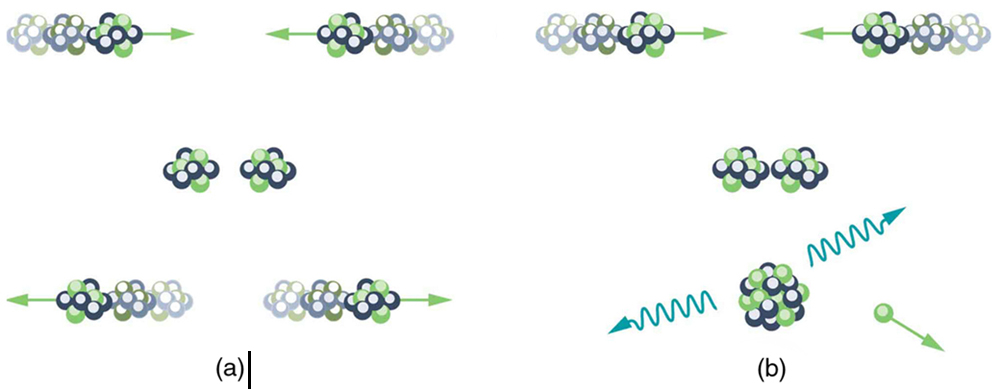| << Chapter < Page | Chapter >> Page > |
You might think that, in the core of our Sun, nuclei are coming into contact and fusing. However, in fact, temperatures on the order of are needed to actually get the nuclei in contact, exceeding the core temperature of the Sun. Quantum mechanical tunneling is what makes fusion in the Sun possible, and tunneling is an important process in most other practical applications of fusion, too. Since the probability of tunneling is extremely sensitive to barrier height and width, increasing the temperature greatly increases the rate of fusion. The closer reactants get to one another, the more likely they are to fuse (see [link] ). Thus most fusion in the Sun and other stars takes place at their centers, where temperatures are highest. Moreover, high temperature is needed for thermonuclear power to be a practical source of energy.

The Sun produces energy by fusing protons or hydrogen nuclei (by far the Sun’s most abundant nuclide) into helium nuclei . The principal sequence of fusion reactions forms what is called the proton-proton cycle :
where stands for a positron and is an electron neutrino. (The energy in parentheses is released by the reaction.) Note that the first two reactions must occur twice for the third to be possible, so that the cycle consumes six protons ( ) but gives back two. Furthermore, the two positrons produced will find two electrons and annihilate to form four more rays, for a total of six. The overall effect of the cycle is thus
where the 26.7 MeV includes the annihilation energy of the positrons and electrons and is distributed among all the reaction products. The solar interior is dense, and the reactions occur deep in the Sun where temperatures are highest. It takes about 32,000 years for the energy to diffuse to the surface and radiate away. However, the neutrinos escape the Sun in less than two seconds, carrying their energy with them, because they interact so weakly that the Sun is transparent to them. Negative feedback in the Sun acts as a thermostat to regulate the overall energy output. For instance, if the interior of the Sun becomes hotter than normal, the reaction rate increases, producing energy that expands the interior. This cools it and lowers the reaction rate. Conversely, if the interior becomes too cool, it contracts, increasing the temperature and reaction rate (see [link] ). Stars like the Sun are stable for billions of years, until a significant fraction of their hydrogen has been depleted. What happens then is discussed in Introduction to Frontiers of Physics .

Notification Switch
Would you like to follow the 'College physics' conversation and receive update notifications?